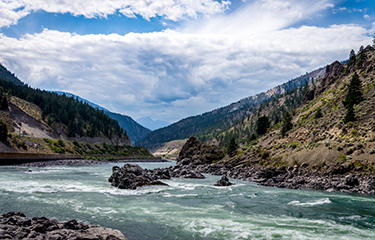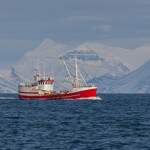Canada makes commitments to bolstering blue economy

Over the past two weeks, the Canadian government has made multiple funding and administrative commitments to bolstering the country’s blue economy – both in terms of growing ocean and inshore fisheries and in boosting salmon survivability.
Canadian Prime Minister Justin Trudeau and 13 other heads of state or government announced the endorsement of the “Transformations for a Sustainable Ocean Economy: a Vision for Protection, Production, and Proseprity.” The new document is a product of the High Level Panel for a Sustainable Ocean Economy, a multi-nation panel committed to sustainably manage all of the ocean under the countries’ respective national jurisdictions by 2025.
"As an ocean nation, the strength of Canada's economy depends on the health of our oceans. A stronger, more sustainable ocean economy will create new jobs, strengthen our food supply chain, and protect our ocean resources for generations to come,” Minister of Fisheries, Oceans, and the Canadian Coast Guard Bernadette Jordan said. “Our Blue Economy Strategy will chart a clear path for Canadians toward a future that is driven by ocean protection and prosperity"
The new document outlines a series of commitments to sustainability in order to build a “sustainable blue economy” across five areas: ocean wealth, ocean health, ocean equity, ocean knowledge, and ocean finance. The Canadian government also committed to providing CAD 4 million (USD 3.1 million, EUR 2.5 million) to the World Bank PROBLUE fund to help developing countries create sustainable ocean plans.
As the government was committing to promoting a blue economy nationwide, it also made commitments to small inshore fisheries on the country’s east coast. Fisheries and Oceans Canada, on 9 December, posted new amended regulations to “preserve and protect the independence of license holders in commercial inshore fisheries in Atlantic Canada and Quebec,” with a special focus to protecting smaller businesses.
The new amendment develops rules that will, according to a release from Fisheries and Oceans: ensure license-holders retain the benefits generated by fishing, and is the person fishing under the license; support the fleet separation policy by prohibiting certain types of corporations from holding licenses in the inshore sector; and creates eligibility criteria to prevent the issuance of licenses to independent core license holders that have transferred their rights and privileges to a third party.
"Our government has been working diligently with partners to enshrine the owner-operator and fleet separation policy into law,” Jordan said. “After years of advocacy from independent harvesters, today we're delivering on our commitment to build a stronger, better, and more resilient inshore fishery on the East Coast. These regulations will benefit harvesters, their families, and their communities for generations, by ensuring the economic benefits made by harvesters, stay with harvesters."
Also on 9 December, Canada announced a an award of CAD 176.3 million (USD 138.1 million, EUR 113.7 million) for the design and construction of a permanent fishway at the Big Bar landslide site.
The Big Bar landslide blocked the Fraser River in early 2019, presenting a nearly impassible obstacle for hundreds of thousands of chinook and sockeye salmon. In the short term, the Canadian government worked for solutions to get salmon around the blockage, including building a salmon cannon. Despite those efforts, as of August 2019 just 56,000 salmon had cleared the landslide.
Now, with the latest financial award, a new fishway will be constructed with an expected operational date before the 2022 Fraser salmon migration. Extensive work throughout 2019 and 2020 created access to the remote site, and work during 2020 allowed for a larger migration. Now, the permanent fishway should allow for salmon to migrate obstacle-free.
"From day one, the Big Bar response has been a remarkable, all hands-on deck effort. Together, Canada, BC and First Nations have overseen tremendous efforts to help ensure salmon have safe passage,” Jordan said. “We are thrilled that construction will soon begin on a permanent fishway. This is a long-term, sustainable solution that will not only protect, but help revive, our wild salmon populations in the Fraser River to their former abundance."
Photo courtesy of Harry Beugelink/Shutterstock






Share